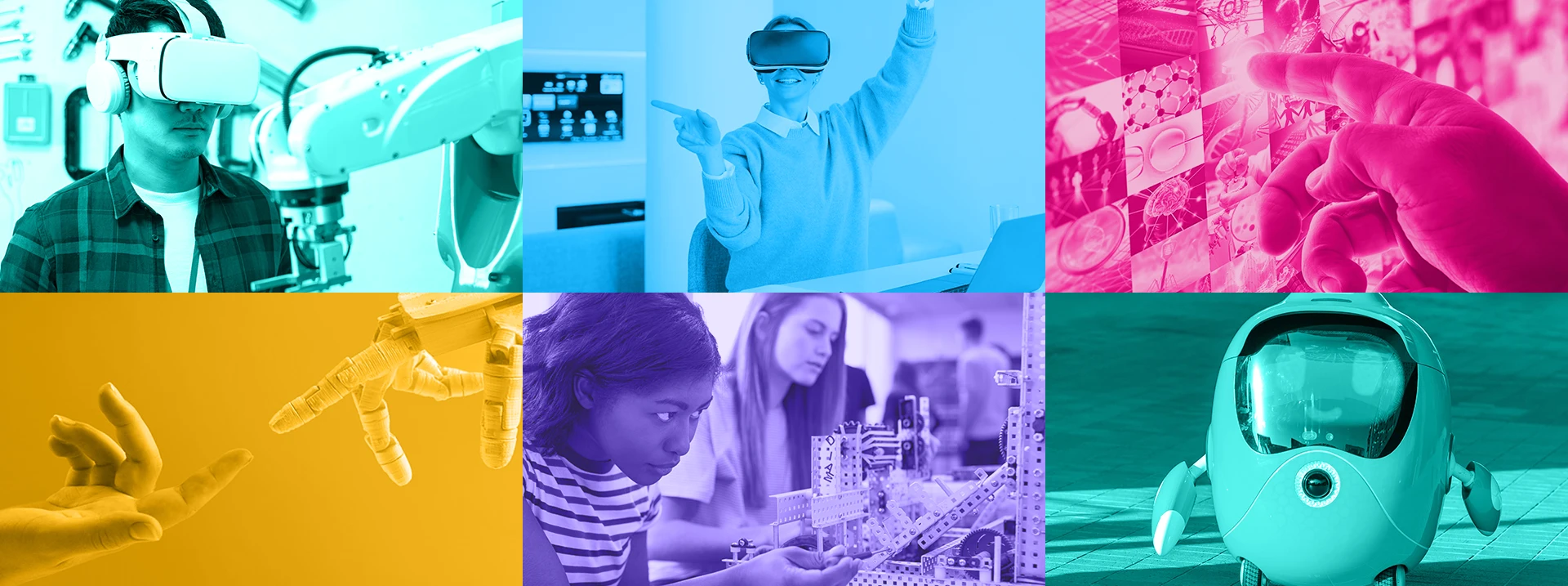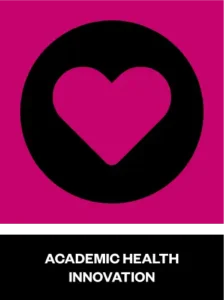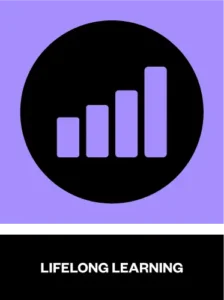Thematic Lines and Sub-themes


The current and emerging trends in the field of education, which include changes in teaching methods, the use of technology in the classroom, the incorporation of socio-emotional skills in education, among other aspects. These are the sub-themes:
- Innovative Learning Spaces: Utilizing advanced design and technology to create environments that enhance learning and collaboration.
- Inverted Classroom: Reversing traditional lecture and homework elements to engage students in active learning during class time.
- Gamification: Incorporating game design elements in educational settings to motivate and increase student engagement.
- Competency-Based Learning: Focusing on students demonstrating mastery of a subject at their own pace before advancing.
- Hybrid Learning: Combining online digital media with traditional classroom methods to offer flexibility and efficiency in learning.
- Flexible and Personalized Learning: Tailoring education to meet individual student needs, abilities, and interests.
- Experiential Learning: Emphasizing learning through experience, often outside of the traditional academic setting.
- Active Learning: Encouraging students to actively participate and take control of their own learning process.
- Challenge-based Learning: Engaging students in solving real-world problems through collaborative learning experiences.
- Connectivism and Social Learning: Leveraging networks and social platforms to facilitate learning through connectivity and sharing.
- Constructive Assessment of Learning: Using assessments to provide feedback that supports student growth and learning paths.
- The New Curriculum: Innovating curriculum design to meet the evolving needs of students and society in the 21st century.
- Open Access (practices, resources, repositories): Promoting the free availability of educational resources to enhance learning and research.
- Mobile Learning: Utilizing mobile devices to allow for learning anytime and anywhere.
- Multidisciplinary: Integrating multiple academic disciplines to provide a more comprehensive understanding of complex issues.
- Makers’ Movement: Encouraging hands-on learning through creating, building, and tinkering in collaborative environments.
- AI-Powered Personalized Learning Pathways: Tailoring Education to Individual Needs.
- Blockchain in Education: Ensuring Transparency and Integrity of Academic Credentials.
- Virtual Reality (VR) and Augmented Reality (AR) in Higher Education: Creating Immersive Learning Experiences.
- Adaptive Learning Systems: The Future of Customized Education.
- Learning Analytics and Data-Driven Insights for Enhanced Educational Outcomes.
- The Role of Artificial Intelligence in Automating and Enhancing Assessment.
- Internet of Things (IoT) in Campus Management and Learning Environments.
- Cloud Computing in Education: Facilitating Collaboration and Accessibility.
- Wearable Technologies in Education: Enhancing Learning through Smart Devices.
- 3D Printing in Education: Fostering Innovation and Creativity in the Curriculum.
- Cyber-Physical Systems in Lab and Field Learning: Bridging the Digital with the Physical.
- Digital Twins in Education: Simulating Real-World Environments for Learning.
- Ethical Considerations in the Use of Emerging Technologies in Education.
- The Impact of Social Media on Collaborative Learning and Social Engagement.
- Cross-Reality (XR) Environments for Collaborative and Remote Learning.
- Neurotechnology and Education: Understanding Learning through Brain-Computer Interfaces.
- Smart Campus: Integrating IoT, AI, and Big Data for an Enhanced Educational Ecosystem.
- Digital Storytelling: Leveraging Multimedia for Engaging Learning Experiences.
- Sustainable Technologies in Education: Promoting Environmental Awareness and Action.
- Voice-Assisted Technologies for Accessible and Inclusive Learning.

Area of study that focuses on the application of technological tools to improve the quality of education and the teaching-learning process. This area can encompass a variety of technologies, from simple digital tools to complex online learning management systems. These are the sub-themes:
- Adaptive Learning: Personalizing educational content and pace to individual learner’s needs using AI algorithms.
- Ubiquitous Learning: Enabling learning in various contexts and locations through the integration of technology and everyday life.
- Virtual Reality: Immersing students in a fully digital environment to simulate real-life experiences for learning.
- Augmented Reality: Overlaying digital information on the real world to enhance learning experiences with interactive elements.
- Massive Open Online Courses (MOOC): Offering free online courses to large numbers of participants across the globe, democratizing access to education.
- Learning Analytics: Utilizing data analysis and reporting tools to improve learning and educational environments.
- Wearable Technologies: Incorporating smart wearable devices to support and enhance learning experiences and outcomes.
- Emerging Technologies: Exploring the potential of new and evolving technologies to transform educational practices.
- Collaborative Social Networks: Facilitating learning through social interaction and collaboration within online community platforms.
- Mobile Learning: Allowing for flexible education via smartphones and tablets, enabling learning anytime, anywhere.
- Bring Your Own Device (BYOD): Encouraging students to use their personal mobile devices for learning activities, promoting a more comfortable and personalized learning environment.
- Quantum Computing in Education: Revolutionizing Data Processing for Learning Analytics.
- Edge Computing for Enhanced Mobile Learning Experiences in Remote Areas.
- Artificial Emotional Intelligence (AEI) in e-Learning: Understanding and Adapting to Learner Emotions.
- Smart Classrooms: Integrating IoT for Interactive and Efficient Learning Environments.
- Digital Ethics and Cybersecurity in Educational Technology: Protecting Data and Privacy.
- Holographic Technology for Immersive Learning Experiences in Higher Education.
- Bioinformatics in Educational Technologies: Enhancing Life Sciences Learning through Technology.
- Nanotechnology in Education: A New Horizon for Learning Material Development.
- Spatial Computing in Education: Bridging Physical and Digital Learning Spaces.
- 5G Technology in Higher Education: Enabling Ultra-Fast and Reliable E-Learning Platforms.
- Mixed Reality (MR) in Education: Merging AR and VR for Next-Gen Learning Experiences.
- Blockchain for Academic Verification: Immutable Records of Student Achievements and Credentials.
- Voice Recognition Technology in Language Learning: Enhancing Pronunciation and Listening Skills.
- Robotics and AI in STEM Education: Hands-on Learning with Intelligent Machines.
- Digital Literacy: Equipping Students with Essential Skills for the Digital Age.
- E-Portfolios for Lifelong Learning: Tracking and Showcasing Academic and Professional Development.
- The Internet of Skills: Remotely Controlling Physical Tasks for Practical Learning.
- Geospatial Technologies in Geography and Environmental Education: Interactive and Real-time Learning.
- Smart Pens and Notebooks for Enhanced Note-Taking and Learning.
- Phygital Learning Environments: Blending Physical and Digital Experiences for Engaging Education.

It refers to the implementation of new ideas and practices in education and research in the field of health, with the aim of improving the quality of training and healthcare. These are the sub-themes:
- Interdisciplinary Medical Learning: Combining knowledge from various medical and non-medical disciplines to enhance understanding and innovation in patient care.
- Humanism in Medicine: Emphasizing compassion, empathy, and respect for patients as central components of medical education and practice.
- Technology in Medical Education: Incorporating digital tools, simulations, and online resources to improve teaching and learning in medicine.
- Patient-Centered Learning: Focusing education on understanding and addressing the whole patient, including their experiences, values, and needs.
- Clinical Cases: Using real or simulated patient scenarios to teach practical application of medical knowledge and decision-making.
- Inverted Classroom: Reversing traditional educational roles where theoretical learning occurs outside the classroom, and practical application is focused on during class time.
- Tools for the Development of Clinical Judgment: Utilizing various resources and methodologies to enhance students’ ability to make informed, effective clinical decisions.
- Digital Health Records as a Learning Tool: Enhancing Clinical Judgment and Patient Care.
- Augmented Reality (AR) in Surgical Training: Bridging the Gap Between Theory and Practice.
- Telemedicine Training Modules: Preparing Students for the Future of Remote Healthcare.
- Artificial Intelligence in Diagnostic Medicine: Integrating AI into Medical Education.
- Wearable Health Technology in Medical Training: Monitoring and Managing Patient Health.
- Simulation-Based Learning in Healthcare: Advanced Simulators for Clinical Skills Development.
- Blockchain for Secure and Transparent Medical Research: An Educational Perspective.
- Machine Learning for Personalized Medicine: Implications for Medical Education.
- Virtual Patients and Digital Case Studies: Revolutionizing Patient-Centered Learning.
- Integrating Genomic Medicine into Medical Curriculum: Preparing for the Future of Personalized Healthcare.
- Mobile Health (mHealth) Applications: Their Role in Clinical Education and Patient Management.
- 3D Bioprinting and Its Educational Applications in Regenerative Medicine.
- Ethical and Legal Considerations of Emerging Technologies in Medical Education.
- Big Data Analytics in Healthcare Education: Teaching Data-Driven Decision Making.
- Interprofessional Education (IPE) Using Technology: Fostering Teamwork in Healthcare Settings.
- Internet of Medical Things (IoMT) in Clinical Training: Devices, Applications, and Implications.
- Nanotechnology in Medicine: Incorporating Nanomedicine Studies into Health Education.
- Digital Mental Health Resources: Integrating Mental Wellbeing into Medical Training.
- E-Health Literacy: Educating Future Healthcare Professionals in Digital Health Competencies.
- Cybersecurity in Healthcare: Training for Protection of Digital Health Information.

The management of educational innovation is crucial to evaluate its progress, benefits, and necessary resources, as well as to have the right human talent to carry out this innovation. These are the sub-themes:
- Educational Innovation Indicators: Metrics and benchmarks used to measure and track the impact and effectiveness of new educational practices.
- New Models of Educational Institutions: Emerging structures and frameworks for schools and universities that reflect changes in technology, society, and learner needs.
- Process Transformation: The reengineering of educational processes and methodologies to improve efficiency, effectiveness, and adaptability.
- Training and Development Models: Innovative approaches to professional growth and skill enhancement for educators and administrators.
- Innovation Methodologies: Systematic approaches and strategies designed to foster creativity and innovation in educational settings.
- Innovation Processes in Institutions: The implementation of new ideas, products, or methods within educational organizations to improve outcomes.
- Challenges of Change and Current Complexity: Addressing the difficulties and complexities involved in adapting to rapid changes in the educational landscape.
- Internationalization: Strategies and practices to incorporate global perspectives and multicultural understanding into education.
- Copyright and Intellectual Property Rights: Legal aspects and ethical considerations of using and creating educational content and technology.
- Resources for Innovation: Tools, technologies, and funding opportunities available to support innovative practices in education.
- Procedures to Work With Digital Addictions and their Prevention: Strategies and interventions to address and prevent excessive use of digital technologies among students.
- Personal and Academic Resilience: Developing the ability to overcome challenges and setbacks in a learning environment.
- Approach to Bullying and Cyberbullying: Strategies and programs to address and prevent bullying and harassment in both physical and digital spaces.
- Mentorship and Tutorship Models: Innovative Approaches to Personal Support and Student Well-being.
- Leveraging Big Data Analytics for Measuring Educational Innovation Indicators.
- Blockchain for Academic Integrity: A New Model for Managing Copyright and Intellectual Property Rights in Education.
- AI-Driven Platforms for Personalized Development and Training Models in Higher Education.
- Virtual Reality (VR) in Enhancing Internationalization and Cultural Competency in Higher Education.
- Digital Tools and Strategies to Combat Cyberbullying and Promote Personal Resilience in the Academic Environment.

Topics that address the acquisition of knowledge, skills, and competencies throughout a person’s life with the main goal of staying up-to-date and acquiring new skills to improve employability and professional development. These are the sub-themes:
- Competencies and Skills Required in the Future: Identifying and cultivating the essential abilities needed to navigate the rapidly evolving job market and societal changes.
- New Trends and Models in Continuing Education: Exploring innovative approaches and formats for lifelong learning, including online platforms and flexible learning options.
- Impact of New Technologies in Continuing Education: Assessing how advancements in technology are transforming learning opportunities and access for adult learners.
- Alternative Credentials: Recognizing and valuing non-traditional forms of accreditation, such as badges, certificates, and micro-credentials, in the professional world.
- Industry-University Collaboration: Strengthening partnerships between educational institutions and businesses to ensure curriculum relevance and enhance career readiness.
- Self-Learning: Empowering individuals to take charge of their own educational journeys through self-directed learning resources and methods.
- Implications of the Digital Generation in Education Throughout Life: Understanding how digital natives’ approach to learning and technology use influences lifelong education practices and policies.
- Microlearning Platforms and Technologies: Revolutionizing Skill Acquisition for Continuous Professional Development.
- The Role of Artificial Intelligence in Curating Personalized Lifelong Learning Pathways.
- Blockchain for Lifelong Learning: Securing and Streamlining the Recognition of Alternative Credentials.
- Augmented and Virtual Reality in Lifelong Learning: Creating Immersive and Practical Learning Experiences for Adults.
- Social Learning Networks and Collaborative Technologies: Fostering Community and Peer Support in Lifelong Education.










